Now that my baby starter is quite active and I've had a few successful naturally leavened loaves, I wanted to try making some Tartine bread. I dined at Bar Tartine recently and the idea of baking my own oat porridge bread was stuck in my head. I used breaducation's formula for the Tartine oat porridge bread.
Let's just say mine turned out nothing like breaducation's beautiful bread. My dough was very wet and sticky and I had trouble handling it. You can see that my loaf hardly rose at all.
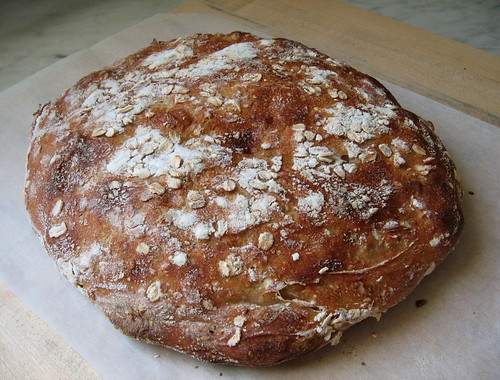

Even though it was more pancake than bread, the flavor was very good. In fact, the flavor was very close to the porridge bread they sell at the bakery. I could taste the oatmeal and it had that sourness I've been trying to achieve in my breads.
Thinking that the oat porridge may have been too ambitious, I tried the Tartine basic country bread recipe instead. This did not go so well either. I think I see the Batmobile parked in there.
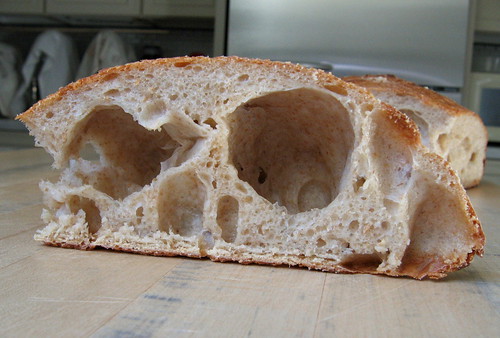
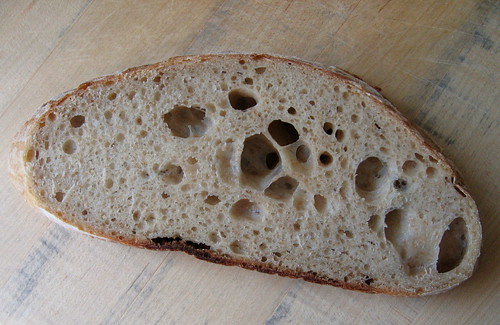
After searching for clues on TFL, gluten underdevelopment was the most likely culprit. Even though I bulk fermented at room temp (70F) for 3.5 hours with 5 stretch-n-folds during the first 2.5 hours, I was making the newbie mistake of watching the clock instead of watching the dough.
I vowed to be patient during my next attempt at the Tartine basic country. I bulk fermented until the dough volume had increased by at least 30%, the top of the dough was slightly domed not flat, and I could see bubbles along the sides of my container. This took 5 hours at 70F.
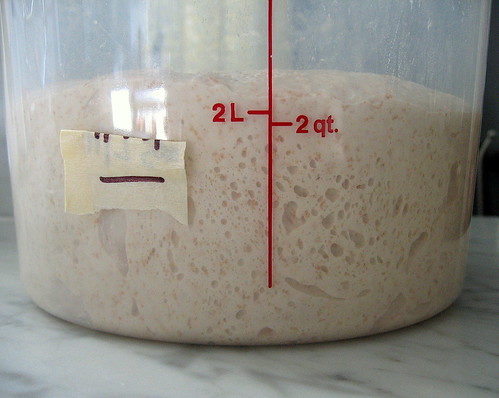
My patience really paid off!
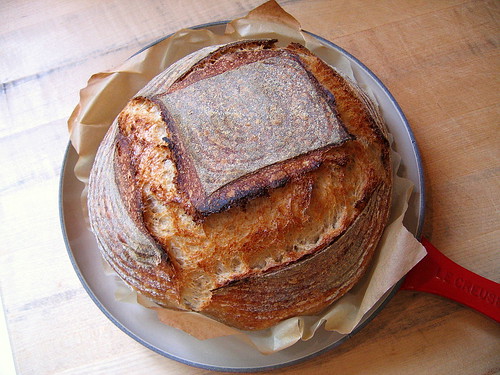
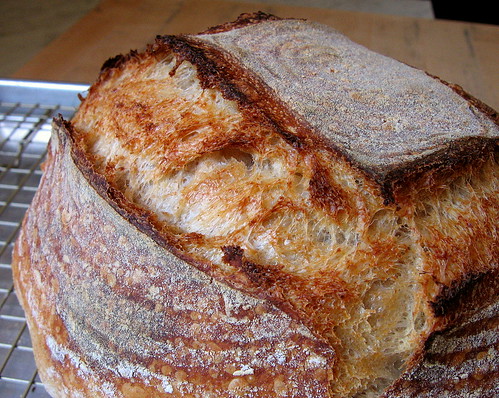
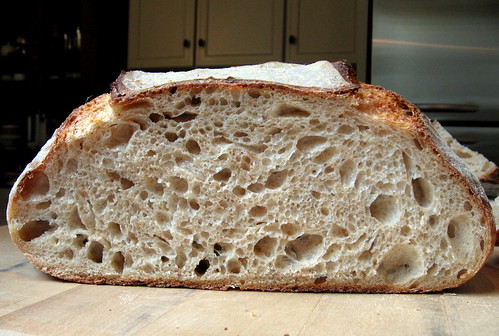
I even made pizza with some of the dough.
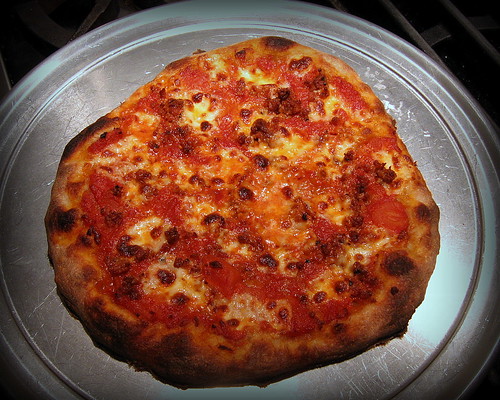
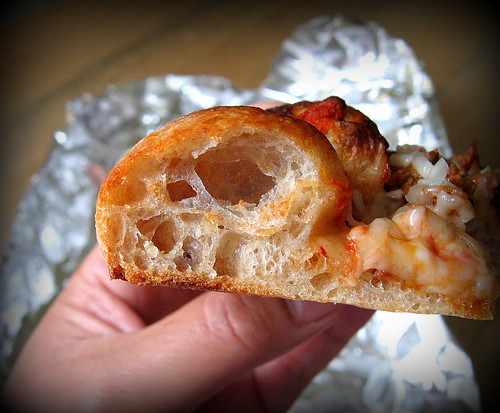
I hoped that my success wasn't just a fluke. I made another batch of dough the next day.
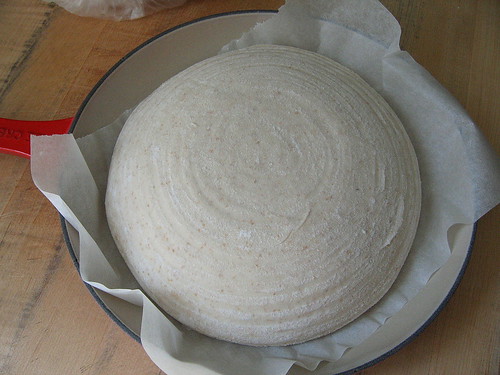
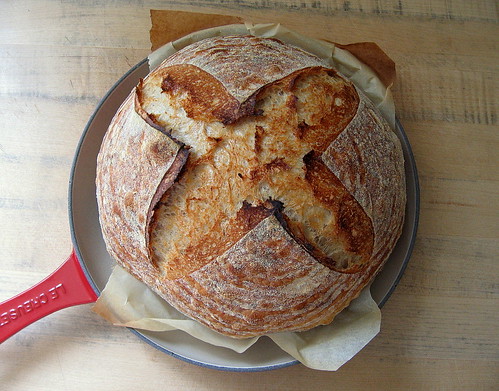
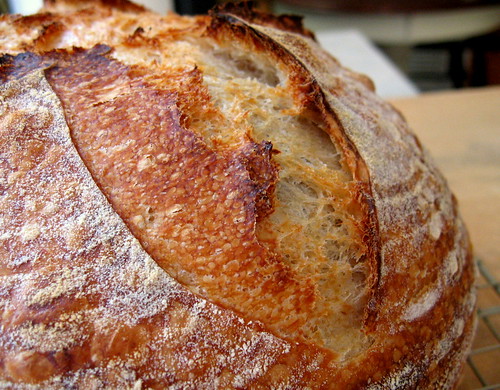
This time the crumb was even better than in the previous bake.
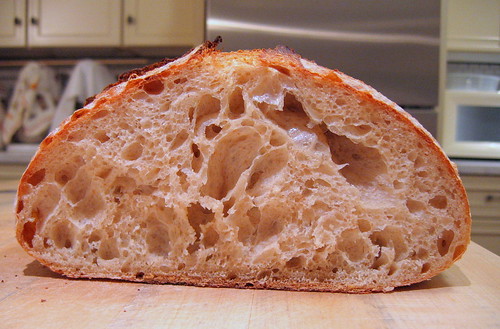
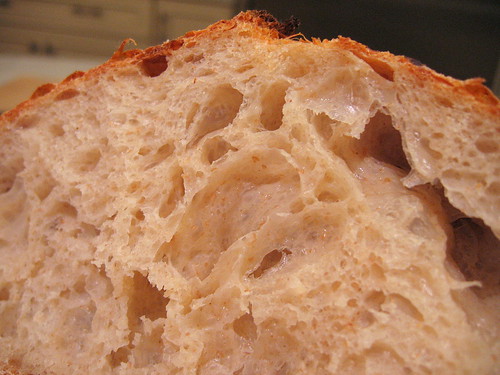
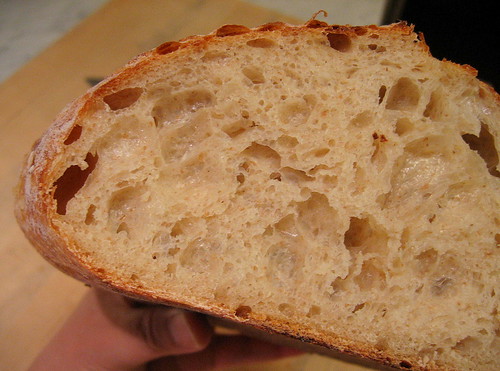
The take away message is "Watch the dough, not the clock".
:) Mary